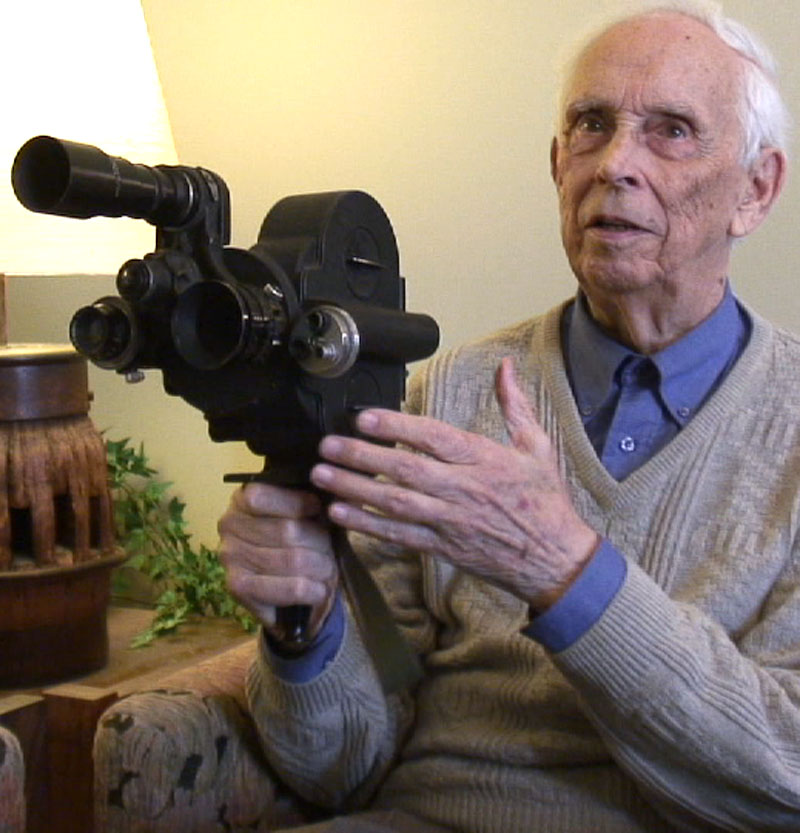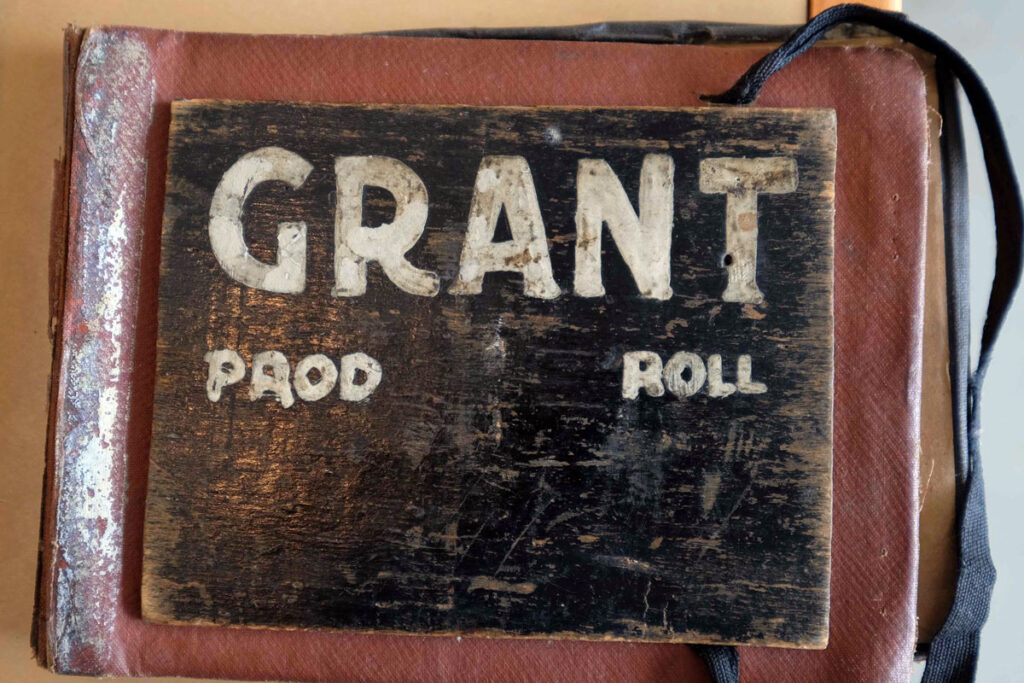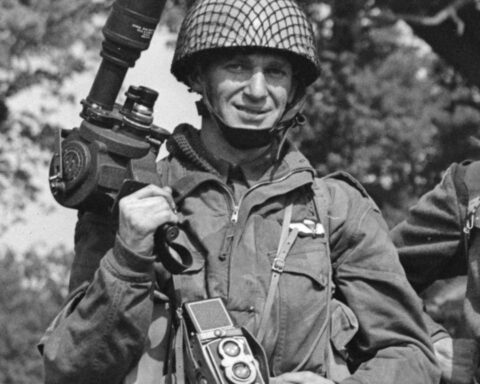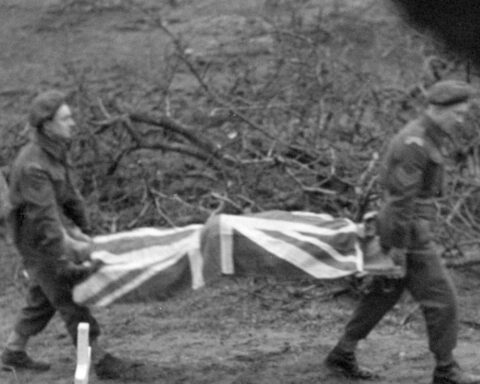It is with great sadness that I learned of the passing of Andrew Graham ‘Cam” Campbell, on December 17th, 2019, at the amazing age of 102 years old. I last spoke with ‘Cam’ when I attended his 101st birthday last year at his retirement home in Burlington, Ontario.
Graham Campbell was a kind and creative friend, and I enjoyed the times we spent together talking about his times during the war as a member of the Canadian Army Film & Photo Unit, and about some of the people he worked alongside at Rapid Grip and Batten.
Graham was born in Montreal in 1917 and moved with family to Toronto in 1931. After finishing schooling, he began working in 1936 as an apprentice in the Art Department of Rapid Grip and Batten, a large engraving house in Toronto.
Graham joined the Royal Canadian Corps of Signals (RCCS, RC Sigs) in 1942, completed basic training in Brantford, following up with Signals camp at Vimy Barracks in Kingston. While there, he was taken on staff doing illustration for various training exercises, and cartoons for their Signalman paper.
Graham shipped overseas to the Signals camp at Guildford in the south of England for advanced training and where he did some poster illustrations.
By chance Graham was sent to deliver these posters to the London office of Public Relations on Pall Mall. There he was interviewed by an officer of the Film and Photo Unit and was given the chance to join the Unit.
Graham trained at Pinewood Studios along with AL Calder and Doug Skene. Successful graduates from the course at Pinewood received the rank of Sgt., and were assigned to London to film investitures, parades, army training exercises, and army related events in England and Scotland.
After the Normandy invasion, additional cameramen were requested and Sgt. Campbell was sent by ferry to Ostend, Belgium. Assigned to the 4th Armoured Division, he travelled through Brussels and on toward Holland, following the main advance of the Canadians and Allies in Northwest Europe.
The war was on its last legs and Graham and his Unit celebrated the end of the war in a small town (Varel) outside of Wilhelmshaven, Germany. He later covered the Victory Parade in Berlin in July 1945.
Graham returned to Canada on the Queen Elizabeth in November of 1945. He continued as an illustrator at RGB, and later worked at Art Associates before going solo as a freelance illustrator.
Graham retired in 1991, and I first came in contact with him in May 2008, where I first interviewed him at his home in Richmond Hill, Ontario. Graham, along with the remaining surviving members of the CFPU at the time, was awarded the CSC COMBAT CAMERA AWARD, a special achievement award to the Canadian Army Film and Photo Unit (CFPU) in 2010. The CSC award recognizes “the outstanding achievements of the CFPU during the war, in honour and remembrance of the courageous cameramen of the Second World War.”
As a member of the Unit, Graham’s job was to take motion picture footage of the men and women of the Canadian Forces overseas during WWII. Some of his footage appears in the Canadian Army Newsreels.
“Produced by, of, and for the Canadian Army, the Canadian Army weekly Newsreel is your newsreel. Its job is to portray faithfully the life of Canadian soldiers wherever they may be. They are shown from front line theatre to headquarters in Canada, to keep you posted on the deeds of Canada’s fighting Army.” SOURCE: Canadian Army Newsreel Issue No. 49, War Amps of Canada.
I want to thank the entire Campbell family for their hospitality.
Graham will be sorely missed.
















Thanks for remembering.
Neil Campbell [son]
Hi Neil – you are very welcome. I am so glad to have met ‘Cam’ along with some of the rest of the veterans from the Unit. He was a very talented guy and I enjoyed our hook-ups for lunch whenever I would find myself in the Toronto area. Dale : )